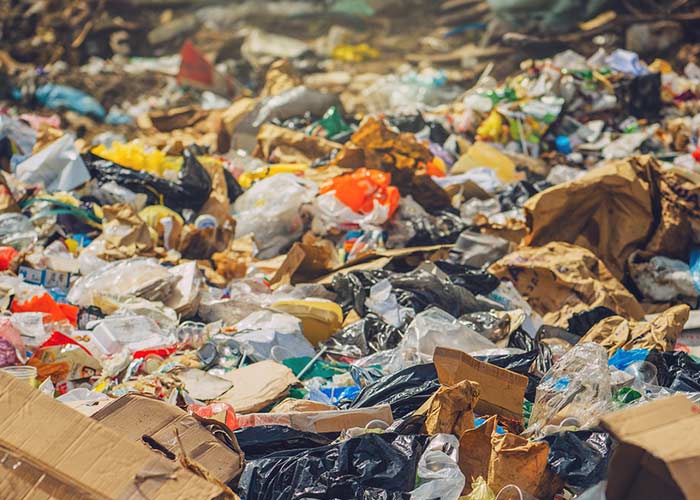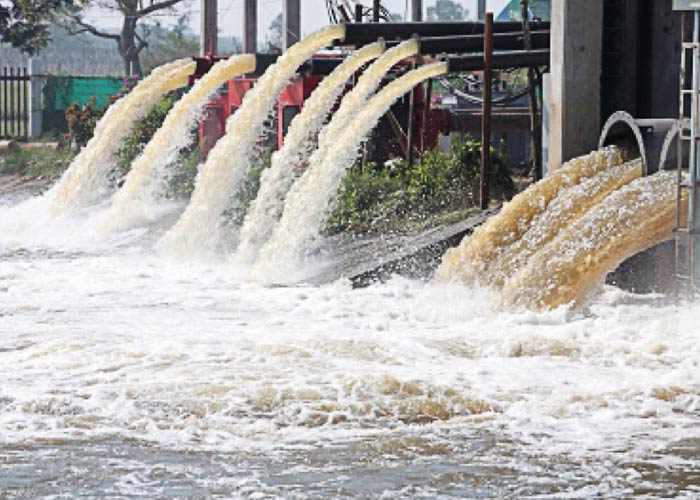Garbage has become a serious problem in the world today. According to a report published in Nature journal, the problem of garbage or solid waste is assuming terrible proportions today. By the end of this century (2100,), garbage will be collected at the rate of 11 million tonnes per day globally, more than three times today’s rate. It implies that the garbage-generation which amounted to 3.5 million tonnes per day in 2010 will become 6 million tonnes per day by 2025. At present, people of India produce about 62 million tonnes of solid-waste annually. Out of this, 45 million tonnes of the garbage are left untreated and disposed of by civic agencies in an unscientific manner.
According to the report, urban India generates 109,589 tonnes of waste per day. Interestingly, the urban US produces 624,700 tonnes of garbage per day, which is the highest in the world, while the second largest happens to be urban China with 520,548 tonnes per day. India’s waste-generation will be more than 376,639 tonnes per day by 2025, especially with the population of urban India expected to increase to 538 million.
What is Garbage Pollution?
Garbage pollution arises when the waste collected in dumping sites keeps rotting, spreading odour and cause air pollution in the surrounding areas, which also creates problems at the administrative level. It is often seen that waste including inorganic material such as iron cans, paper, plastic, glass pieces, or leftover food, animal bones, vegetable peels etc are dumped in the open. In areas where people maintain milch animals, poultry or other animals, their faeces also pollute the atmosphere. Often fire breaks out in the dumps of garbage deliberately or inadvertently. Air pollution also spreads when the garbage is burnt in the open in villages, thereby posing a grave threat to health and environment.
Rivers too are victims of various types of pollution generated by industrial and household wastes. Increasing disposal of solid waste and sewerage, as well as discharge of industrial effluents into in the water sources is spoiling the landscape of beautiful spots. Tourism prospects are taking a beating.
What is the Problem with Garbage?
In olden times, garbage generally comprised only organic waste which went into the ground, but the proportion of chemicals in the waste is increasing with the hectic pace of modern development. In countries like India, things used earlier as bags were not harmful. Earlier the pottery was used for liquid substances, and jute bag was used to carry goods. Now, the plastic has changed the situation and a problem has arisen with it because the plastic never degrades. Its recycling is possible, but there is no proper system to deposit it.
In our country, the cities are getting reduced to dumping grounds of waste. Garbage is present everywhere in some form or the other whether there is a village or a city, a temple or a mosque. This problem has been increasing since the last nearly three decades, leading to health issues and degradation of environment. Today we are victims of many types of waste including domestic, agricultural and industrial waste. Every year tonnes of waste or garbage are produced in the country, and only one percent of it is recycled. The rest either accumulates in the fields or in the streets and in the end, during the rainy season; it reaches the oceans through rivers.
There are many reasons for the production of garbage. One reason for this is growing urbanization and prosperity. The more financially strong is the country or the city, the more garbage it will produce. It can also be seen by linking poverty and prosperity, competence and inefficiency. This means where the aspiration for the amenities are high in populations, there will also be increase in the amount of waste. Today, China and India are the prominent examples of this in the world. Both are taking strides in economic development, but in the process, they are also producing piles of garbage. Other reasons for this include changing lifestyle, lack of waste-management and options, and also the big question of the ethics that is fast eroding. We assume that it is our compulsion to produce garbage and its disposal is the work of the government. Perhaps this is where we are making the biggest mistake.
How does Garbage Contribute to Air Pollution?
Today, land, water and air have become polluted. Garbage is dumped in open spaces. Large factories emit a lot of smoke. Due to dust particles in the smoke, air becomes contaminated. In addition to the spread of foul odour, germs also breed in rotting trash leading to various diseases. Mosquitoes, flies and mice find a fertile breeding ground in mounds of waste. Garbage, from the households and the industrial wastes, fall into the rivers. This makes the water of the rivers polluted. Thus, increasing garbage in the home, outside or in water sources has aggravated the problem of air pollution.
How does the Burning of Garbage Affect the Environment?
Micro particles or particulate matter are those toxic particles whose size is so small that they can enter our body through respiration and can damage the lungs in particular. In India and China, every kind of garbage including plastic bottles, electronic goods, is burnt. According to scientists, this is the main cause of air pollution.
The smoke from the burning garbage not only poisons the air, it also increases the spread of diseases. Recent research has provided information about emission of toxic gases like carbon dioxide and carbon monoxide due to the burning of waste. At the same time, it has been pointed out that the particles present in the air are also responsible for many types of diseases. According to researcher Rd. Christine Wiedinmyer, the Associate Director for Science at the University of Colorado, while doing the research, she realized that we have very little information about waste management and garbage-burning. The need is to deeply study the different types of toxins emanated out of such activities.
Wiedinmyer has for the first time prepared a report in which all the countries have been told about the quality of air. This report will help governments to modify their environmental policies. Most of the measures related to health have been made in accordance with the microscopic particles present in the air, in which only their size is given attention, not what they are made of. The report focuses on the different types of microscopic particles that have different effects on both health and environment.
How can we Stop or Control Garbage Pollution?
Waste is the main reason for environmental pollution in both developed and developing countries. The increasing intensity of development is becoming increasingly challenging. The environment becomes messy due to improper disposal of garbage. But using modern technology, many developed countries have not only reduced the pollution by way of waste management but also adopted it as the main source of energy. It is possible to reuse many things thrown in the garbage. The waste of resources can be prevented by their recycling and the environment can be conserved.
In the context of India, municipality facility is not available in rural areas. Therefore, the following measures can be taken for disposal of waste at a small scale:
- Composting
- Vermiculture
(i) Composting: This is the process by which domestic waste such as grass, leaves, leftover food, cow dung etc are used to make compost. A pot is dug up to prepare manure out of dung and garbage. The size of the pit corresponds to the amount of garbage and the available space. Typically, a small rural family can dug up 1 meter long and 1 meter wide and 0.8 meters deep pit. The upper part of the pit should be kept one and a half or two feet high from the ground level. Doing this will not cause rain water to seep into it.
Village households can put domestic farming garbage and dung into the pit. This way, manure is ready in about six months. This organic manure should be removed from the pit and covered with soil. It can then be used for cultivation.
Advantages of composting:
- The extravagant grass seeds found in the fields are destroyed due to heat.
- It prevents pollution caused by rotting of garbage.
- Good manure is prepared from the waste which is helpful in increasing the yield of the field.
(ii) Vermiculture: This is a process of decomposition of organic matter by microorganisms under controlled conditions. In this, manure is prepared by decomposition of organic waste such as vegetable peels, leaves, grass, crop residues, animal wastes, and food garbage etc set in motion by earthworms. Under this method, a layer of organic waste material is laid in a wooden box or soil pit and some earthworms are released over it. Garbage is put on top of it and water is sprayed to maintain wetting. After some time, earthworms consume large quantities of organic litter or waste and make compost, a rich source of organic matter that plays an important role in sustaining soil fertility.
In rural areas, dung, domestic waste and agricultural waste are not fully utilized. It is, therefore, necessary that the villagers should be informed about the production of fertilizer from the waste to prevent pollution in rural areas. Altogether, waste is put to the best use.
Garbage Disposal in Urban Areas:
The proper arrangement for disposal of garbage in cities is done by municipalities. But citizens need to stay vigilant to ensure that the work goes on smoothly, and the waste is transported from a particular place to the municipal collection centre from where its proper disposal can be done. If the waste management is done by adopting modern techniques, the environment can be protected from pollution.
Need for Scientific Waste Management
For the proper management of garbage, we have to make preparations to deal with this problem in four phases. As a first step, we should try to reduce the amount of waste generated per person. In fact, a little reduction in this quantity would prove to be a very big positive move. The second step should be recycling and reuse. By recycling one tonne of iron, not only the need for iron mining is reduced, it also avoids the emission of one tonne of carbon dioxide. In the third phase, we should produce bio gas and organic manure from this biological waste that remains after recycling and re-use. Metals, batteries, bulbs, should be collected separately. The remaining inflammable waste should be used as a fuel to make electricity, thereby saving fossil fuels and reducing the amount of greenhouse gases emitted in the atmosphere.
In this case, we can learn a lot from Sweden. Sweden re-uses and recycles 47 percent of the waste generated in its regions, and uses 50 percent of the waste as a fuel for energy production. Only 3% of the unproductive waste is needed to be dumped. There, care is also taken to avoid the leak of poisonous substances from dumping sites. There is a ban on putting organic and inflammable waste at dumping sites.
In Sweden, the responsibilities of gathering and treating garbage are distributed in such a way that there is no scope for excuse. This work is divided among waste-producing industries, business houses, municipalities, and private enterprises. Every task is separately delegated such as collection of the garbage, its transportation to the treatment centres, and its scientific treatment. It is the responsibility of municipalities to collect household waste. The companies that produce dangerous waste such as batteries, mirrors, bulbs, electronic waste need to adopt proper management and treatment of waste.
Underground tanks have been built there for municipal waste, which have been linked with large tubes; the last tip of this network goes up to the loading point. Garbage is pushed from the vacuum pressure to the loading point where the slurry is put in vehicles and the garbage is transported to the treatment centres.
A network of different types of treatment centres has been established. It is estimated that Sweden produced 5,67,630 MW of power in 2013, for which 14,74,190 tonnes of domestic organic waste was treated. Bio gas is used as a fuel for vehicles. Electricity is made by burning the remaining inflammable waste in the insinuators; its technique is very advanced, which leads to very little gas emissions. Sweden is the most advanced country to produce electricity from waste. It creates three megawatts of energy from one tonne of waste.
Sweden, in 2013, imported 8,31,400 tonnes of garbage from other countries in Europe to help them in dealing with the problem of waste. After burning the garbage in the incinerators, the residual ashes are planted in construction work in dumping sites. The fuel gas, resulting from the burning of fossil fuels such as coal, oil, and natural gas, is also treated to remove pollutants.
Conclusion
The above example shows that when the garbage becomes a means of income, the arrangements for its treatment are also strengthened. By spending on the salary of the workers and the sanitation workers engaged in the treatment system, their conditions can be further improved. The burden on the public exchequer decreases and employment opportunities are also born. If organized well, this system has the capacity to move forward with its own strength. As a society, we have to rise above negligence of waste and leave the habit of throwing waste here and there.
This problem arises when we pass on its solution to the government and consequently the solution becomes difficult. This change will have to come into the overall society’s thinking. With this, we will be able to take serious and proactive steps towards the disposal of garbage. We need to remember that the garbage lying in the wrong place poses a grave problem but the treated garbage in proper form is also a useful resource.
The time has come when we should re-think over our lifestyle. Whatever was our population up to three decades ago, the amount of the garbage generated was not so big, because our requirements were controlled. Today we have none of the activities today which does not produce garbage. What to talk of the cities, even villages which were known for their decency, peace and cleanliness have come under the sway of garbage. Earlier, all the requirements of the villages were managed locally. Now urbanization has made inroads in the rural areas too. Nylon has replaced the rope used in the making of cots. Now the earthen pitchers are starting to disappear and replaced by plastic containers. Like cities, mobile, motorcycle and other modern products have also taken roots in villages. So, there is no difference in the amount of garbage in the cities and villages. We have learned everything from the western countries, but we are not able to learn how conscious people are there with regard to cleanliness, which is maintained not simply as adherence to any rule or law, but as part of moral duty and social obligation there. The people abroad consider streets and other public places outside the home as part of their living space. But we think that our responsibility is simply to clean up our house. Accordingly, we need to inculcate change in our attitude towards waste or garbage.







